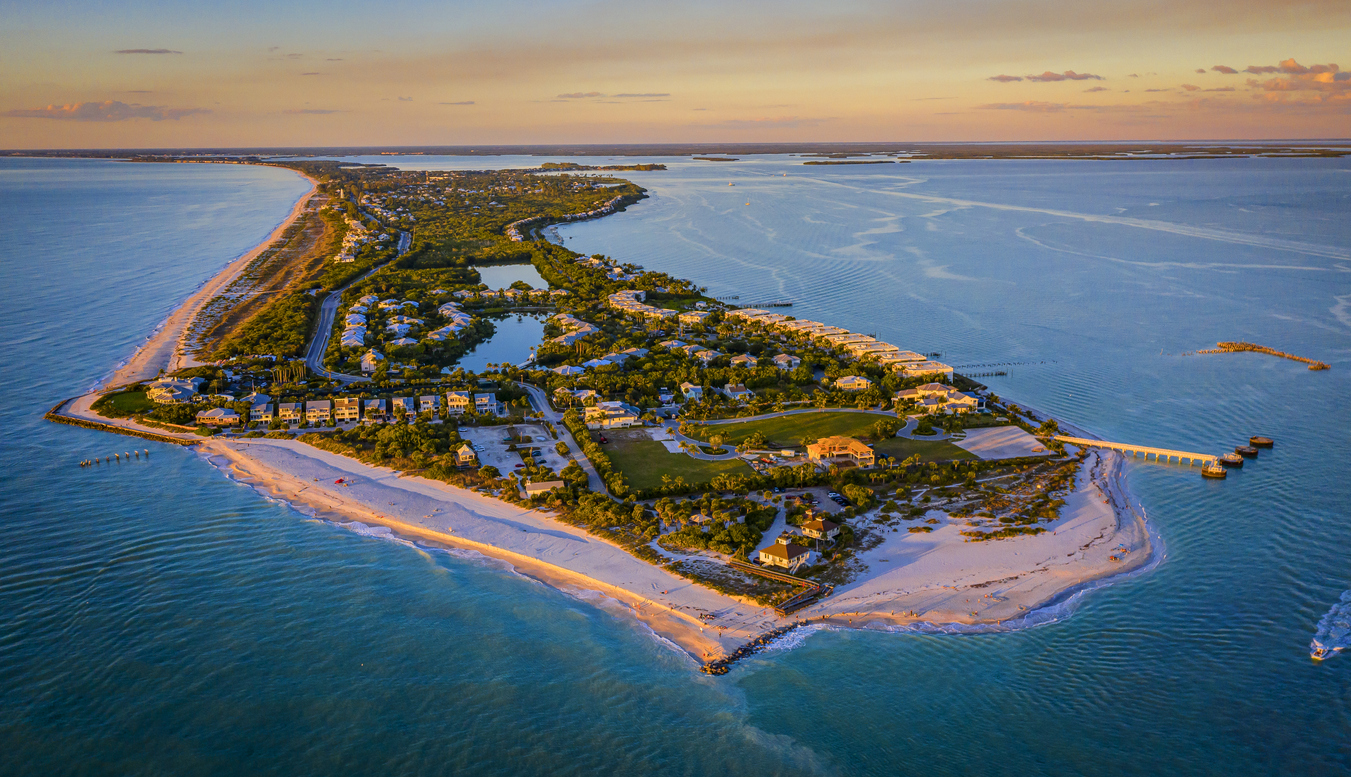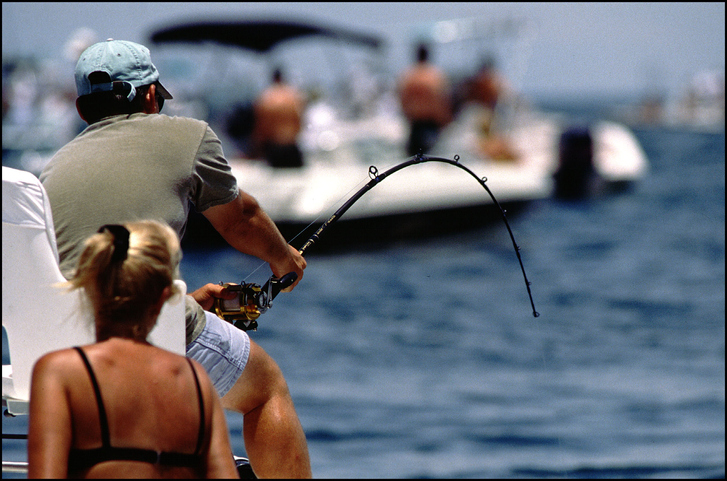

Florida is synonymous with fishing, and tarpon is perhaps the most iconic species of many. You can catch tarpon in many locations, from Key Largo to Key West. However, suppose you want to experience the true power and splendor of this amazing species and the incredible natural beauty that Florida offers. In that case, there’s only one place to go – Boca Grande Pass.
The Boca Grande Pass is exactly what it sounds like – a deep water channel like a mountain pass. It lies between Gasparilla Island and Cayo Costa and is bounded by the #12 buoy on the west (flashing red), a concrete pier and Gasparilla Island’s phosphate dock on the north, the Intracoastal Waterway on the East, and the QR Test Buoy and #75 buoy (flashing green) to the south and southeast.
This deep-water channel connects Charlotte Harbor to the Gulf of Mexico, but it’s not a smooth incline from the shallows of the harbor to the deeper water in the Gulf. Instead, deep holes littering the bottom of the pass make ideal homes for tarpon and other fish.
Why do so many fish congregate here in the spring and early summer? It’s because Charlotte Harbor is an ideal breeding ground. Freshwater from the Peace and Myakka rivers flows into the harbor, mixing it with salt water. This creates a brackish environment ideal for mangroves, which are perfect fish hatcheries and nurseries. Fish come here to spawn and hunt and lie in wait for juveniles as they emerge from the nursery into the deeper water.
Like most of Florida, the area that would eventually become Boca Grande was originally settled by Native American tribes – the Calusa in particular. Charlotte Harbor was the center of their empire, which included thousands of people and covered most of Southwest and South Florida. Sadly, warfare and new diseases introduced by European explorers all but wiped out the tribe in the 16th and 17th centuries.
Europeans wasted no time settling the areas around Charlotte Harbor, eager to exploit the rich fishing found here. The area was home to numerous “fish ranches” by the late 1800s, founded mostly by Spanish and Cuban families. It was the hub of a major fish trade that saw rich exports to Cuba and throughout the Gulf area. Many of these families are still represented in the local population.
While rich fishing was the initial attraction, phosphate rock was discovered in 1885 along the banks of the Peace River. Phosphate is used heavily in manufacturing fertilizer, food, cosmetics, and much more. It was excavated and placed on barges before being shipped downriver to Port Boca Grande. There, it was shipped out to ports around the world. That was replaced by a railroad, with a 1,000-foot-long pier added for easier loading and unloading in 1907. For decades, it remained one of the busiest ports in Florida.
Eventually, phosphate mining and exportation shifted north, and the area around Tampa was developed. Port Boca Grande’s share of traffic dwindled and ultimately ended in 1979. Today, the site is used by Florida Power and Light Company but is much more famous for its role in sport fishing. The area is also seeing a renaissance with tourists. The Gasparilla Island Conservation and Improvement Association transformed the old railroad tracks into a bike path, and a more residential area developed.
Today, the area is home to a thriving sportfishing industry and a growing tourist industry. The period from March through June also sees tens of thousands of visitors descend on Boca Grande seeking tarpon, as well as snook, goliath grouper, and much more.
Boca Grande offers a wealth of things to see and do, particularly if you love to be outdoors. Of course, fishing is the primary draw, but there’s so much more on offer!
With all that being said, the primary draw here is fishing. So, let’s explore what you need to know if you’re heading to Boca Grande Pass to catch a giant tarpon.
If you’re heading to Boca Grande Pass to try your luck fishing for tarpon, you’re set for an exciting experience.
You’ll find several different areas that are well-suited, whether you’re an experienced angler or just starting. These include:
If you’re interested in tarpon, the best time of year to visit Boca Grande Pass is between March and June. However, understand that this is peak season, with thousands of anglers heading here to try their luck.
Our recommendation is to visit between June and November for those who want to cast a line without having to deal with so many other people. Plenty of fish are still biting, although the tournaments have moved on. You’ll also find that the weather is a bit cooler in September, October, and November.
You can catch far more than tarpon here all year long. Other fish species include goliath grouper, snook, trout, sharks, yellowfin, mahi-mahi, and many others.
You will need a valid Florida fishing license to fish anywhere around the Boca Grande Pass (or anywhere else in Florida, for that matter).
Tarpon are generally catch-and-release, so plan to catch yours, get a photo, and then put it back in the water. Many other species are also catch-and-release, so make sure you know the regulations for each species before you keep any (or just plan to release all the fish you catch).
If you’re coming during peak season, make sure to check the regulations, as they change every year.
Rich in history and steeped in fishing traditions, the Boca Grande Pass offers exciting adventure options for almost anyone. It’s one of the most popular places to catch tarpon, but you’ll find a wealth of other species ready for your hook. Plus, there’s a diversity of non-fishing things to do, from sunbathing to biking, all in South Florida’s natural beauty.
Source:
https://www.floridastateparks.org/learn/boca-grande-pass
https://gasparillaoutfitters.com/boca-grande-pass/
https://www.leegov.com/parks/beaches/bocabeach
https://www.experiencebocagrande.com/activities/boca-grande-lighthouse/
https://fishingbooker.com/blog/tarpon-fishing-in-boca-grande/
https://bocagrandechamber.com/island-activities/